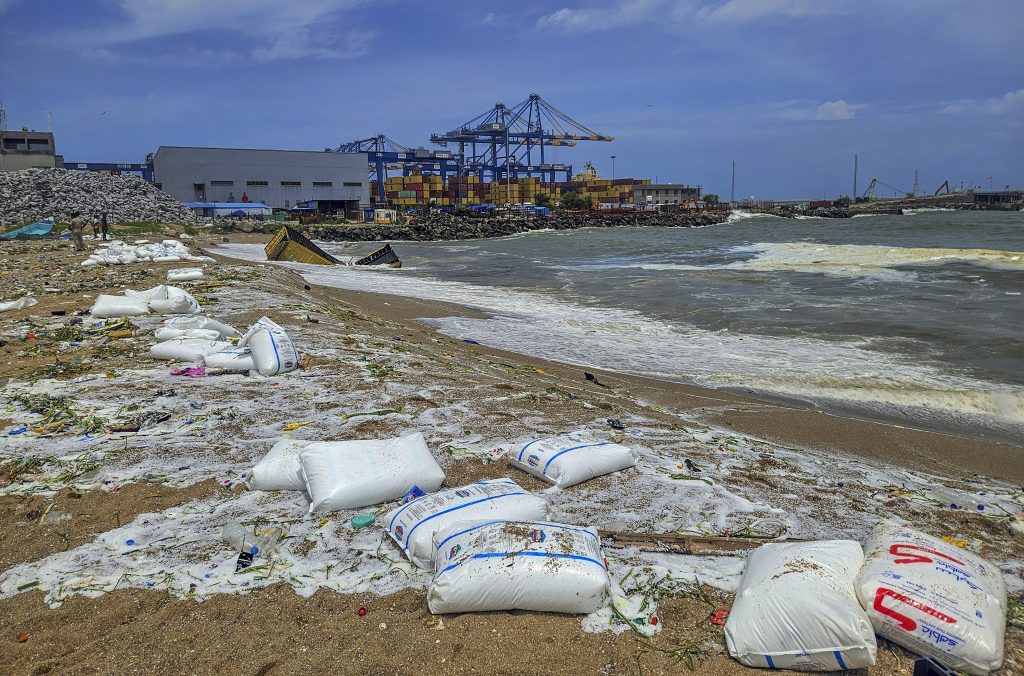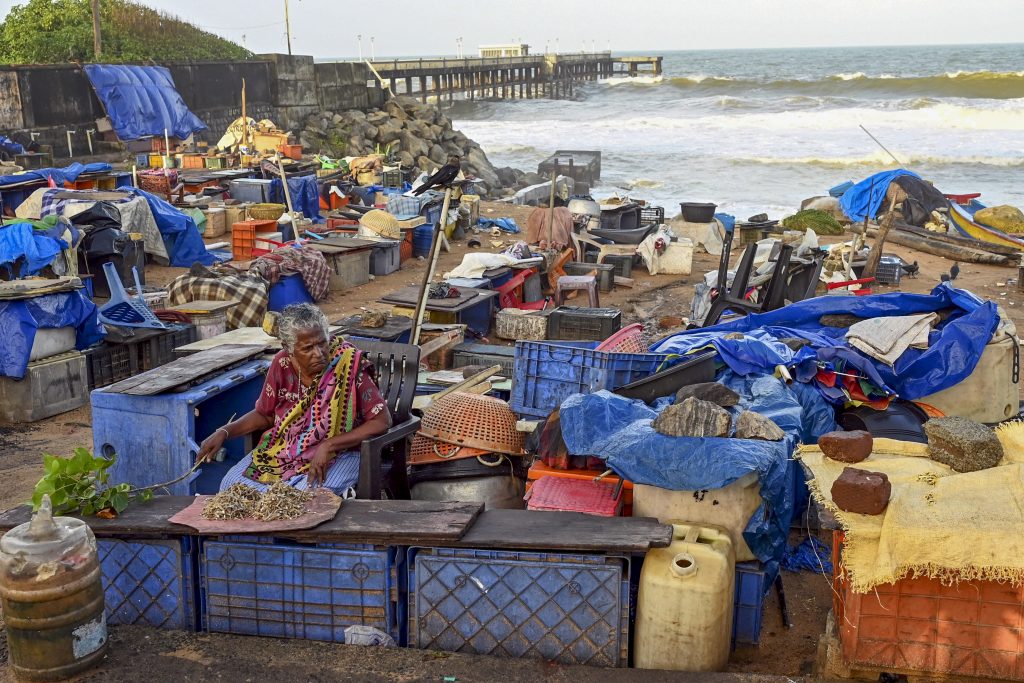Flags of Convenience, Oceans of Risk: A Shipwreck That Was Waiting to Happen
On Sunday (May 25), the MSC Elsa 3, a Liberian-flagged cargo vessel nearing three decades of service, slipped beneath the waves just 14.6 nautical miles off the Kerala coast, hauling with it more than 640 containers, among them 13 packed with hazardous chemicals and over 450 metric tonnes of marine fuel.
The vessel’s sudden capsize, coming as the southwest monsoon broke over the region, sparked immediate alarm, and the threat of an oil spill, toxic leakage and far-reaching damage to Kerala’s fragile marine ecosystem impending.
While all 24 crew members were safely rescued, the sinking was no mere accident. It exposed, yet again, the deep fault lines of global shipping, a world riddled with ageing vessels, weak oversight and flags of convenience that allow corporations to skirt responsibility while coastal communities are left to deal with the wreckage.
The growing toll of shipping accidents
A 2022 study by Shuyan Wan et al documents a sharp increase in container ship accidents – groundings, fires and collisions, particularly in congested ports and high-traffic seas.
These events often involve hazardous or poorly documented cargo. Toxic leaks of heavy metals, fuel or chemicals like calcium carbide and nitric acid accumulate through marine food chains, threatening marine life and human health.
Yet, sunken containers often receive little regulatory attention.
Compounding the problem is the scale of global maritime trade. Around 90,000 ships now carry 80% of the world’s goods, using cheap bunker fuel that contributes roughly 3% of total global emissions. Massive ships, some exceeding 220,000 tons, leave behind significant impacts: oil pollution, airborne toxins, acidification and 6.4 million childhood asthma cases annually, as per a Nature Communications study.
The MSC Elsa 3 was no exception. The container vessel is owned and operated by the Mediterranean Shipping Company, one of the world’s largest shipping firms headquartered in Geneva. Built in 1997 and flagged under Liberia, a nation known for relaxed maritime oversight, the ship had a spotty record, with past incidents near Yemen and Nigeria.

Lost containers, particularly those filled with toxic cargo, are time bombs. In this photo, bags containing plastic granules from the cargo of the MSC Elsa 3 wash ashore near the Vizhinjam International Seaport on May 28, 2025. Credit: PTI.
Before its final voyage, five deficiencies had been noted during inspection in Mangalore, not long ago.
Preliminary findings now suggest that the vessel suffered a ballast water system failure, leading to a 26-degree tilt and eventual blackout.
Flags of convenience and the question of accountability
Why do shipping companies continue to use old, risky vessels like the MSC Elsa 3? The answer lies in the “flag of convenience” system, where countries like Panama, Liberia and the Marshall Islands allow ship registration under lenient regulations, low taxes and cheaper labour requirements. These flags shield companies from legal scrutiny and environmental obligations.
Indian officials have confirmed that the MSC Elsa 3’s malfunction was preventable, a result of technical flaws and possible crew inexperience. The absence of stringent international enforcement mechanisms allows companies to evade responsibility even when such failures endanger thousands.
In fact, over 20,000 containers have been lost at sea globally in the past 15 years. Many contain hazardous cargo – fireworks, acids or plastic pellets – that pollute waters, suffocate marine life and leave long-lasting seabed damage.
The X-Press Pearl disaster off Sri Lanka in 2021 released huge amounts of nurdles and toxic chemicals, devastating local fisheries and livelihoods.
Similarly, in March 2025, a collision near the UK coast involving the Solong and Stena Immaculate highlighted how lapses in traffic control and hazardous cargo handling could threaten entire ecosystems.
Legal ambiguities and gaps in global maritime governance
Despite decades of international treaties, enforcement remains weak. The International Maritime Organisation (IMO) has adopted 21 treaties on marine pollution, including MARPOL (1973) and protocols for oil and chemical spill response.
The IMO is also pushing for decarbonisation, but progress is hampered by resistance from shipping powers and vested interests.
While the EU has introduced emission accountability at ports and firms like Maersk are testing hydrogen or wind-powered vessels, many industry leaders still rely on outdated ships.
The World Shipping Council only recently mandated cargo loss reporting (effective 2026), and penalties for violations remain minimal.
National laws often reflect these limitations. India’s Merchant Shipping Act affiliates with IMO conventions but lacks the speed and severity to address shipwreck emergencies. The lack of an FIR even four days after the MSC Elsa 3’s sinking reflects institutional sluggishness. The Kerala government had to seek legal advice to initiate criminal proceedings, raising questions about jurisdiction and procedural inertia.

Fishworkers now demand immediate compensation for affected fishers. The Valiyathura fishing centre lies deserted due to bad weather and restrictions on fishing activities in light of the capsizing of the MSC Elsa 3. Photo: PTI.
Impact on coastal states and Kerala’s fishers
For Kerala, a coastal state whose fisheries sector sustains nearly 800,000 people, the sinking of a vessel carrying toxic cargo is a direct threat to life, livelihood and the economy.
After the incident, fishing has been banned within 20 nautical miles of the wreck site. With dozens of containers already washing ashore and hazardous chemicals like calcium carbide in the water, fears over seafood contamination are rife.
Fishworkers now demand immediate compensation for affected fishers. They also flagged previous protests over large vessels entering nearshore routes, violations that persist despite safety risks.
The shipwreck has also sparked public panic, with misinformation about fish toxicity spreading rapidly. In response, the Kerala government initiated a public campaign titled “You Can Eat This Fish” and is conducting water quality monitoring with agencies like Central Marine Fisheries Research Institute and the Pollution Control Board.
The fishing community, however, is not satisfied with the chief minister’s announcement of free ration and a meagre amount as relief.
Yet, beyond reactive measures, what Kerala faces is the systemic marginalisation of coastal states in India’s broader maritime framework. Port development and shipping regulation lie with the Union government. Port privatisation, exemplified by the rising clout of conglomerates, often sidelines environmental safeguards and state-level concerns.
This asymmetry raises a critical question: can Kerala independently secure justice when federal and corporate interests dominate maritime governance?
Lessons from global precedents
The global record of shipwrecks offers few reassuring precedents. In 2019, after MSC lost 270 containers in the North Sea, the company pledged a full cleanup and deployed drones and SONAR. Yet such promises rarely translate into long-term restoration.
In Sri Lanka, the government is still battling legal and logistical challenges after the X-Press Pearl disaster, with minimal reparations reaching local communities.
Lost containers, particularly those filled with toxic cargo, are time bombs. In Monterey Bay, a single sunken container was found altering marine ecosystems more than a decade later. Studies show that physical pollutants from shipwrecks persist for decades, disrupting deep-sea habitats and food chains.
Efforts to tighten regulation have emerged. The IMO has proposed stricter guidelines on ballast water management, cargo handling and emissions. Environmental NGOs have demanded legally binding measures to prevent old ships from operating in ecologically sensitive zones.
But without credible enforcement and transparency, especially from flag states and corporate giants, these reforms risk becoming performative.
Towards a responsible maritime power – what India must do
India, as an emerging maritime power, cannot afford to be passive. With 95% of its trade by volume moving through seas, and an increasing number of commercial ports along its coastlines, maritime safety must be a national priority.
First, India must press for stronger international rules on ship safety, cargo documentation and waste management. This includes advocating for binding penalties on non-compliant vessels and enhancing cooperation on maritime surveillance, especially in regional forums like BIMSTEC and the Indian Ocean Rim Association.
Second, national laws must entrust coastal states with greater authority in disaster response, environmental regulation and fisheries management. Kerala, Tamil Nadu and other maritime states must be allowed to enforce safety zones, prosecute violators and secure compensation independently.
Third, a national maritime safety taskforce, combining the Indian navy, coast guard, pollution control boards and port authorities should be institutionalised, with real-time cargo tracking, risk modelling and emergency protocols.
Fourth, India must diversify its regulatory focus. Beyond port security and trade facilitation, there must be equal emphasis on the rights of coastal communities – fishers, traders and tourism operators, who bear the brunt of maritime disasters.
Lastly, public pressure and civil society stakeholders must remain active. Transparency in shipping operations, cargo manifests and compensation mechanisms is vital to ensure justice for those impacted.
The cost of neglect and the urgency of reform
The MSC Elsa 3’s sinking was not simply an accident, it was the outcome of structural negligence, weak regulation and geopolitical complacency. For coastal communities in Kerala, this disaster highlights the fragility of their lives in the face of global commerce. For India, it is a test of its maritime leadership. Will the country continue to prioritise profit and global rankings, or will it lead with responsibility and equity?
Coastal states must be given not just responsibility, but autonomy to protect their shores, enforce environmental safeguards and stand up to negligent actors, domestic or foreign. As oceans rise and shipping volumes grow, the need for just, accountable and ecologically sensitive maritime governance is no longer optional, it is imperative.
The author is director, Inter University Centre for Social Science Research and Extension, Mahatma Gandhi University (MGU), Kerala. He also served as ICSSR senior fellow, senior professor of international relations and dean of social sciences at MGU.
This article went live on May thirty-first, two thousand twenty five, at forty-eight minutes past eight in the evening.The Wire is now on WhatsApp. Follow our channel for sharp analysis and opinions on the latest developments.




